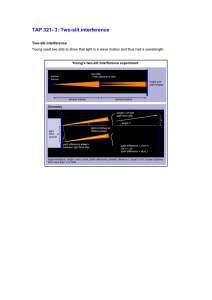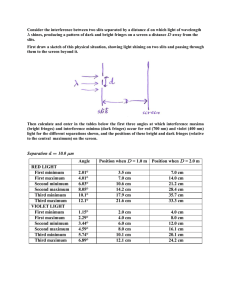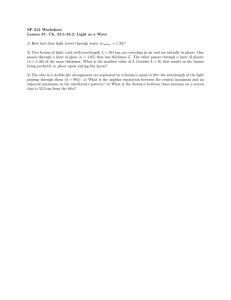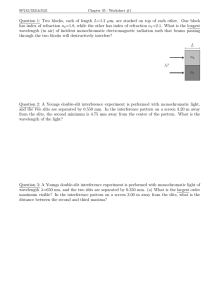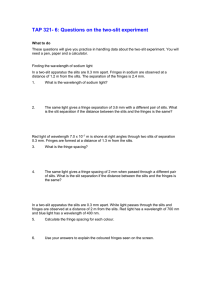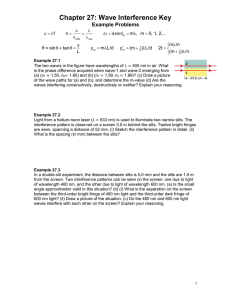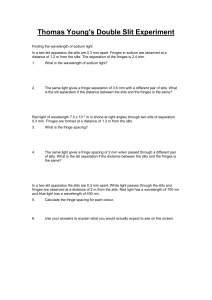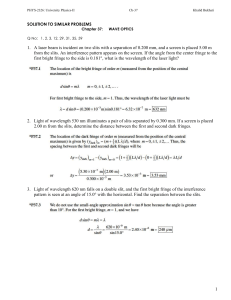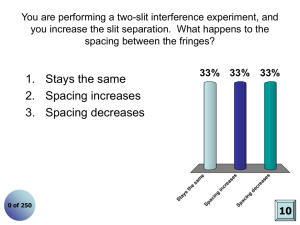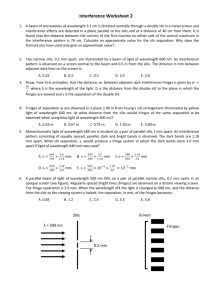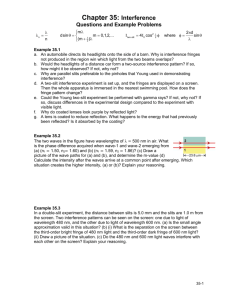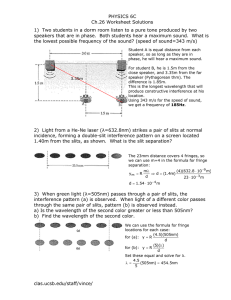Episode 321-7: Two-source interference: some calculations (Word, 23 KB)
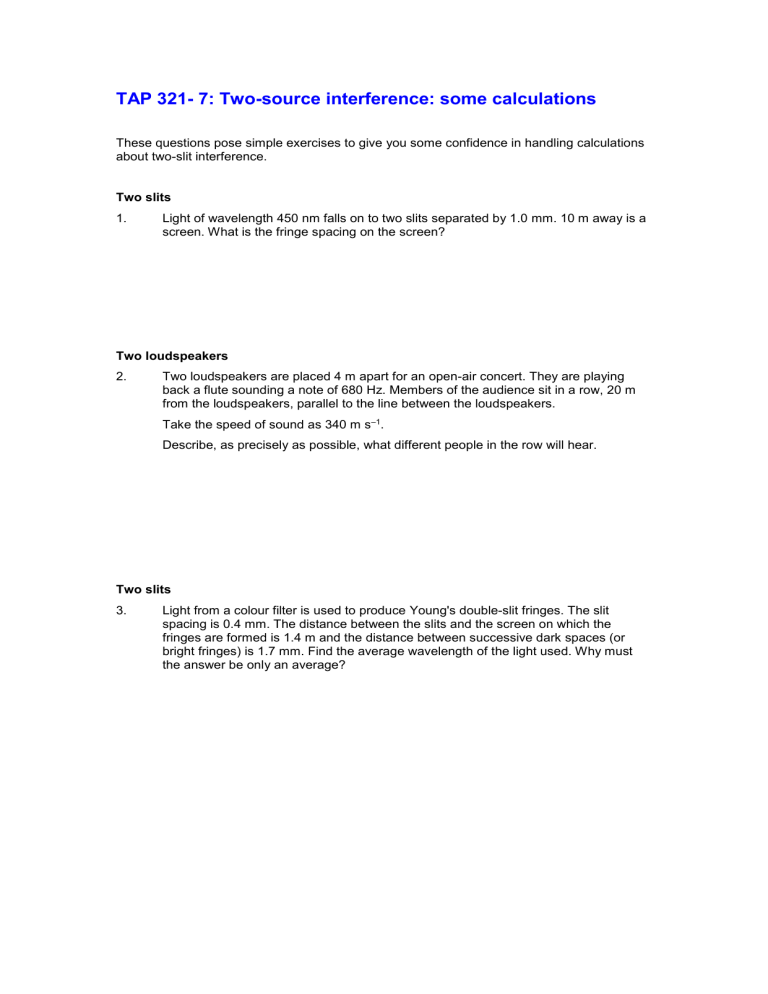
TAP 321- 7: Two-source interference: some calculations
These questions pose simple exercises to give you some confidence in handling calculations about two-slit interference.
Two slits
1. Light of wavelength 450 nm falls on to two slits separated by 1.0 mm. 10 m away is a screen. What is the fringe spacing on the screen?
Two loudspeakers
2. Two loudspeakers are placed 4 m apart for an open-air concert. They are playing back a flute sounding a note of 680 Hz. Members of the audience sit in a row, 20 m from the loudspeakers, parallel to the line between the loudspeakers.
Take the speed of sound as 340 m s
–1
.
Describe, as precisely as possible, what different people in the row will hear.
Two slits
3. Light from a colour filter is used to produce Young's double-slit fringes. The slit spacing is 0.4 mm. The distance between the slits and the screen on which the fringes are formed is 1.4 m and the distance between successive dark spaces (or bright fringes) is 1.7 mm. Find the average wavelength of the light used. Why must the answer be only an average?
Practical advice
These questions require knowledge of two-slit interference and (in question 2) the relationship between wave speed, frequency and wavelength. In question 3, students need to recognise the broad pass band of most coloured filters. The sample books of filters (gels) used for theatrical lighting often give graphs of transmittance against wavelength.
Answers and worked solutions
1.
2.
3.
d sin
d x
x
L
L d
450
10
9 m
10 m
1 .
0
10
3 m
4 .
5
10
3 m
The wavelength of the sound is 340 m s
–1
/ 680 s
–1
= 0.5 m.
So the sound fringe spacing should be
d x
d sin
x
L
L d
0 .
5 m
20 m
4 m
2 .
5 m
Members of the audience should hear the rise and fall of the volume of the sound every 2.5 m along the row. Note that each loudspeaker does not radiate equally in all directions – so the equal intensities part of the answer is an approximation only.
d d sin
x
L
dx
L
4
10
4 m
1 .
7
10
3 m
1 .
4 m
4 .
9
10
7 m
486 nm
The filter will probably allow a quite wide range of frequencies through. The eye may not be able to see distinct fringe patterns for different colours in that range, and we identify the point at which the pattern is at its overall darkest or brightest.
External reference
This activity is taken from Advancing Physics chapter 6, 180S
